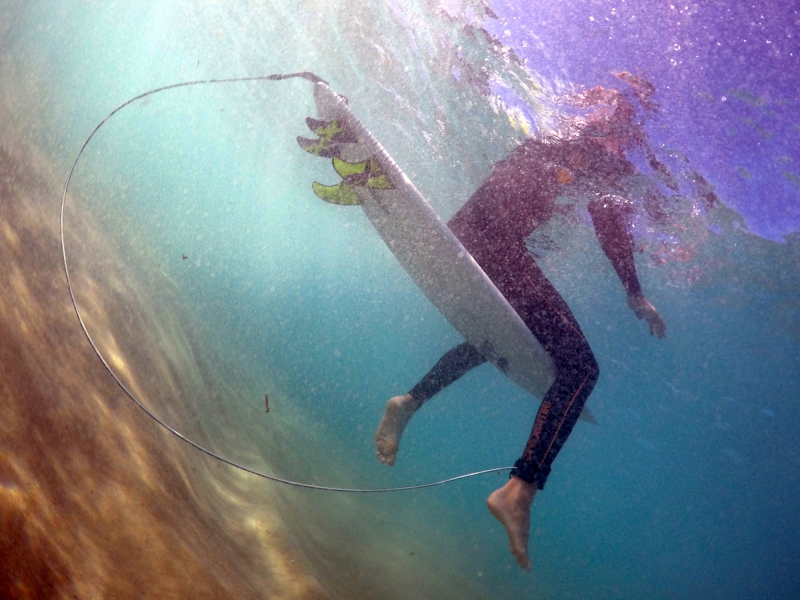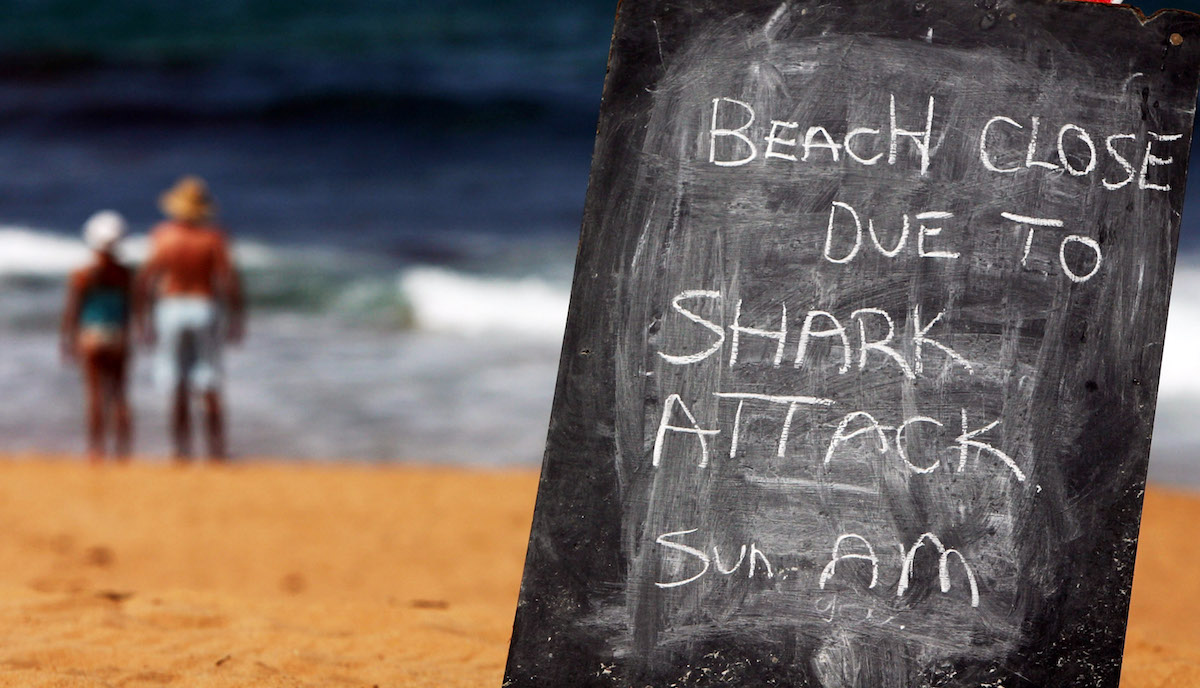- On August 3, two people were bitten by sharks at New Smyrna Beach off the Florida coast. A day later, an elderly Florida man was also bitten.
- Your chances of getting attacked by a shark are extremely low: 1 in almost 4 million. But there are still ways to reduce your odds of an encounter.
- Scientists agree that it’s important to avoid swimming at dawn and dusk, and to stay away from areas replete with fish.
- If a shark approaches you, one expert suggests standing vertically in the water and facing the shark.
- Visit Business Insider’s homepage for more stories.
Last week was the annual Shark Week extravaganza on the Discovery Channel, and it seemed to be shark week in Florida, too.
On August 3, a 23-year-old woman was bitten on the hand and wrist by a shark at New Smyrna beach, just east of Orlando. Minutes later, a 21-year-old man’s right foot was bitten at the same beach. The following day, a Florida man in his 50s was also attacked. All three survived their encounters, according to the Associated Press.
The previous weekend, two Florida swimmers were also bitten at New Smyrna beach – bringing the attack total to five in just over a week.
According to Erich Ritter, a scientist from the Shark Research Institute at Princeton University, incidents like these that involve single, superficial wounds suggest “exploratory bites.” Such hit-and-run attacks account for about 80% to 90% of shark bites, Ritter told Business Insider.
"The shark is trying to figure out what we could be," he said. "The animal's not clamping down because we're an unknown and could be dangerous."

According to the International Wildlife Museum, your odds of being bitten by a shark are 1 in about 4 million.
But Ritter and other shark experts say there are still easy ways you can minimize your risk of encountering a shark in the water if you're nervous about it.
How to avoid sharks
Avoid swimming when visibility conditions in the water are poor, Ritter suggested. That could be during the early morning hours before the sun has risen high in the sky, at twilight or dusk while the sun is setting, or in areas where the water is murky (like at the mouth of a river where fresh water, salt water, and sediment mix).
George Burgess, the former director of the Florida Program for Shark Research, agreed.
"Don't go in the water between dusk and dawn - time periods when sharks are most active," Burgess previously told Business Insider.
According to Ritter, sharks aren't necessarily the most aggressive at these times; rather, it's when they have the hardest time seeing.
"This means that the shark has to come closer to objects in the water, because as soon as light intensity goes down, it has a harder time estimating distance and swims into you. So that's interpreted as aggression," he said.
Burgess and Ritter also said swimmers should avoid areas where fish - most sharks' preferred food - are abundant.

"If you see seabirds diving, if you see fishes jumping, if you see humans fishing off of the shoreline, that means there's fish around. If there's fish, there's probably sharks," Burgess said.
What to do if you do encounter a shark in the water
In the event that a shark approaches you and looks like it might make contact, try hitting the animal in its sensitive nose, Burgess said.
"If you can bop it on the nose with your fist, it likely will veer away and, once again, you hopefully will have enough time to get out of the water," he said.
He added: "If a shark's got you in its jaws, the eyes and the gill slits - the five openings behind the eyes - are very sensitive. Stick your fingers in there. Claw at them. Some people that have been bit have had success in getting them to open their mouths when you poke at their eye."

If a shark shows up in the water, Ritter said, swimmers should assume a vertical position, stop moving, and maintain eye contact with the animal.
In a 2012 study, Ritter and his co-author Raid Amin showed that adopting a vertical body position rather than a horizontal one kept a bull shark at a greater distance during an encounter and also decreased the chances of the animal approaching.
Ritter said this could work because most organisms in the ocean are horizontal, so sharks may be less willing to approach an object with a different orientation.

In another study, the two scientists found that Caribbean reef sharks were able to identify which direction a scuba diver's body was facing - the sharks preferred to approach from a point outside the diver's field of vision, which showed that the sharks knew which side of the diver was the front.
"Pivot around your body axis," Ritter said. "This prevents the shark from coming at your from behind, like it wants to."

